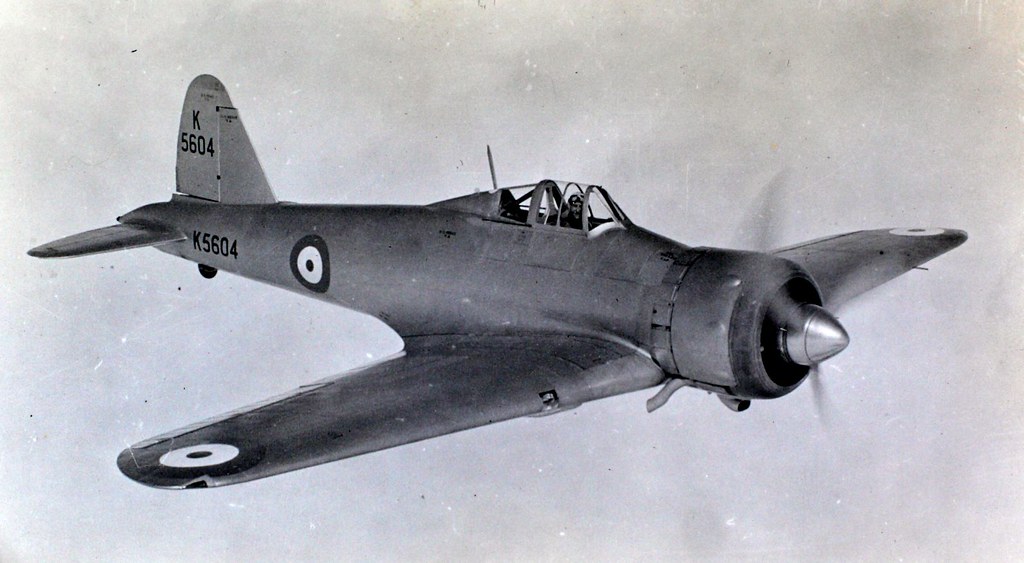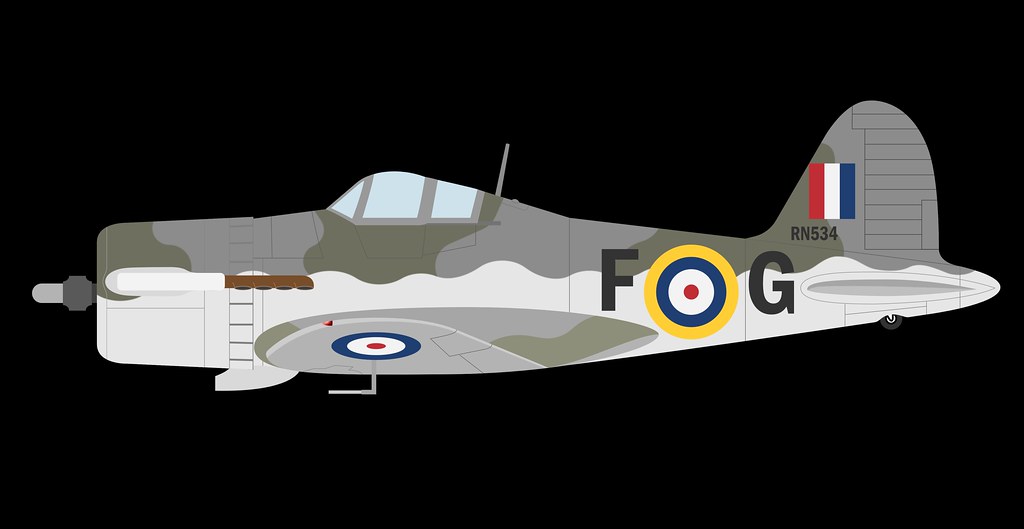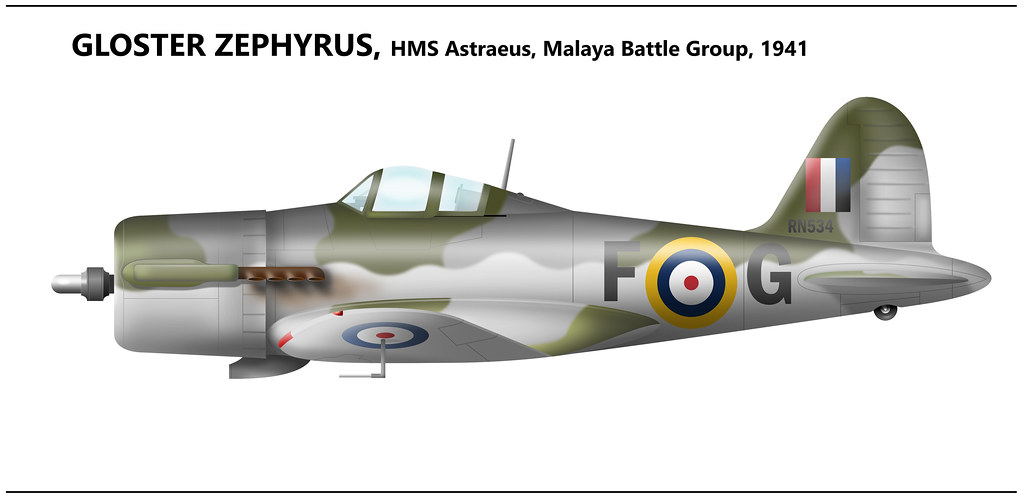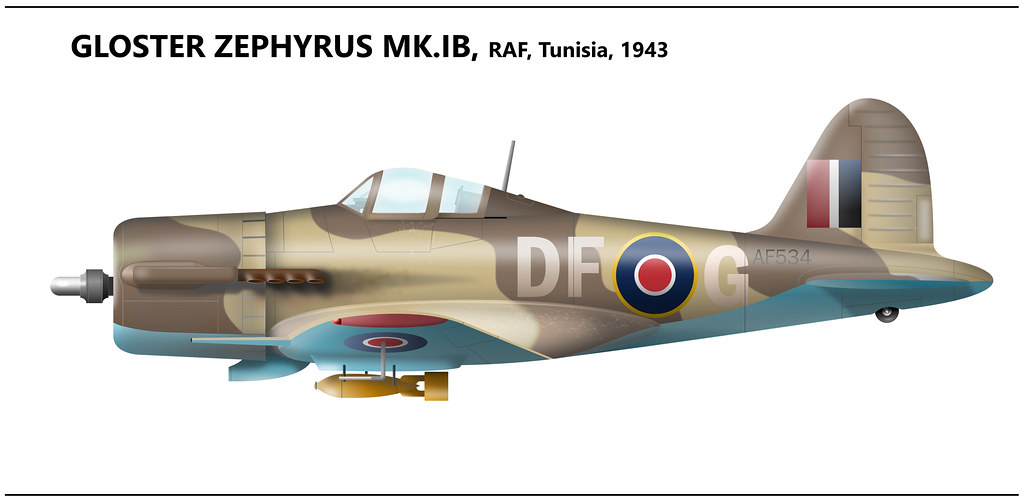Continuing my exploration of 'what if' Royal Navy carrier fighters of an alternate 1940...
Go East Young Man!
So, in Part 1 of this project I took a look at the Vickers Venom and how it might have become the Royal Navy's first single seat monoplane carrier fighter (had the Royal Navy had the interest and the resources available to them). In my mind I had imagined the Venom as a being employed on the small escort carriers guarding the North Sea and Atlantic convoys and possibly even being involved in the early battles in the Mediterranean. But what about the Far East and the Pacific?
It's perhaps a little easy - in the 80 years that have elapsed since the start of World War 2 - to overlook British & Commonwealth operations in Asia and Oceania. Certainly, even at the time, the Commonwealth forces fighting in the Far East felt that they were forgotten about as the main priority was the defence of the home front. (Even North Africa seemed to get more immediate attention than the forces in the Indian sub continent and Australasia.)
 |
| Above: Sadly, the RAF in the Far East had to make do with whatever was available from the bottom of the barrel! Here we see a flight of the much maligned Buffalo Mk I fighters over Malaya in late 1941. Well past it's sell by date even at the start of the war this tubby little fighter waddled around the skies of Asia in the face of the nimble Japanese Zero! Photo source: Wikipedia |
So with my next 'what if' aircraft design I hope to rectify this somewhat with a design that I think would have been an interesting concept suitable for the rigorous environments of Asia... Let's take a look at the GLOSTER F.5/34!
Best of a Bad Bunch
Like the Vickers company, the Gloster Aircraft Company Limited (British aircraft manufacturer from 1917 to 1963) had submitted a design in answer to the Air Ministry's 'F.5/34' specification for a single-seat fighter. As the designation implies the specification was issued - importantly, giving the political landscape in Europe at the time - in 1934.
 |
| Above: Gloster's pretty little prototype certainly looked like the sort of 'modern' (for 1936) design that the British Air Ministry was after... But with just a 840 hp Bristol Mercury engine that was not the first choice, the Gloster's maximum speed of 316mph was disappointing. By comparison, the Hawker Hurricane had a speed of 340mph. Photo source: Charles Daniels Photo Collection via Wikipedia. |
The list of the competing prototypes were; the Bristol Type 146, Martin-Baker M.B.2, Vickers Type 279 Venom, Gloster F.5/34. As it turned out none of these aircraft became the fighter that defended the country during The Battle of Britain, and some of you will probably be thinking 'just as well'!
In fact, (spoiler) above aircraft were deemed so unsuitable that renewed specifications were quickly issued; specification F.36/34 resulting in the Hawker Hurricane and specification F.37/34 resulting in the Supermarine Spitfire.
Now, in this project - and indeed in my previous project on my fictional 'Wib. 413' - I had mentioned the woefully underpowered radial engines of the mid-1930s which had resulted in some very lack-lustre performing fighter designs. It seems that the then Air Ministry were of a like opinion because crucially the new specifications emphasised the requirements for the design to be for a (quote) "High Speed Monoplane Single Seater Fighter" (the phrase 'high speed' not having been in the original F.5/34 spec)!
You might think, then, that the original batch of designs were rubbish and that in not adopting the best of them (the Venom and Gloster, hence my project) Britain had dodged a bullet. Er, well yes and no-ish.
Yes, obviously, in that we ended up with exactly the fighters that we needed in 1940 then yes it was the right decision. BUT that didn't mean that all the fighters from the earlier batch were all bad. It just shows how the Hurricane and Spitfire were far and away ahead of anything else that had been developed in Europe (and even America) at the time... With the exception, naturally, of Germany!
The Vickers Venom and the Gloster, in particular showed a lot of promise - but, as usual, were simply hampered by the choice of the available [radial] engines of the time. Given additional developmental time better engines (particularly from America) were tantalisingly within reach... And this is the point I am trying to make in this project.
...And while the Air Ministry started to panic and jumped ship - to the Rolls Royce Merlin engined fighters - across the globe it seems that others had seen the potential in some of what was being designed in Europe and America in the late 1930s and were very, very interested [note: allegedly].
Zero or Hero?
There is a saying - or rather a cliché - within the aircraft industry that if an aircraft design looks right then it is apt to be right (or variations thereof). For me, this epitomises the Gloster F5/34 design. It is a lovely little aircraft which managed to avoid the British tendency for eccentricity.
There is no doubt in my mind that had it been fitted with a better engine it would have been at least as good - and I speculate, probably more manoeuvrable - than the Hawker Hurricane (at least). There, I've said it. Intriguingly, though, we perhaps actually have a big clue as to what a more powerfully engined Gloster F.5/34 might have been like by taking a look at an aircraft that it often is compared to...
 |
| Above: Look familiar? This, of course, is the legendary Japanese Mitsubishi A6M Zero whish is often - conspiratorially - compared to the Gloster F.5/34 design. |
The A6M Zero first flew in 1939 and the Gloster design appeared in 1936 and, along with a superficial similarity in configuration, that is enough to spawn a mountain of speculation about the real origins of the Japanese design. I am on the fence about this suggestion, I think it's perfectly possible that Jiro Horikoshi - Mitsubishi's chief designer - had seen the Gloster and liked the design, it fitted in very nicely into the Japanese need for a light-weight fighter layout. But, would I go as far as saying that they 'pinched' the design? Well...The British weren't using it! LOL <Wry wink!>
In short, I'm not going to get into this argument. My point in highlighting the Zero, rather, is to point out what an up-powered Gloster might have been like as a fighter.
The Zero's Nakajima NK1C Sakae-12 engine was rated at being roughly 950hp, close to the 'magic' 1,000hp of the Me. 109 and Spitfire's engines. Of, course that alone is no indication of the potential merit of an upgraded Gloster, but for a carrier-based fighter in 1940 that would have been pretty darn good starting place!
But this leaves us with a bit of a sticking point in that I have already said that there weren't any good (I exaggerate for effect) radial engines around in the late 1930s to upgrade my hypothetical Gloster to! My Venom II story had already shown how Vickers had struggled to get a improved engine for their Venom fighter and I had plumped for a still rather anaemic 850hp Pratt & Whitney R-1535 Twin Wasp Junior for my hypothetical Venom II (an engine that was already becoming obsolete at the time.
What we need is something like the Pratt & Whitney -2800-8 'B' Double Wasp with it's enormous 1,500 hp output (which was in the Brewster Buffalo), but that's asking too much and forget the 'newer' R-2800-10 that powered the Grumman Wildcat (stonking 2,200hp). No, we need something that was available in early 1940 and preferably that was already in production in Britain...
Well, we want a hero (no Zero) so how about the greatest hero of them all... Hercules!
 |
| Above: The most powerful British radial in 1940 was the 'Hercules' as fitted to the twin engined Beaufighter. It was unusual - but not impossible - to fit this engine to a single-engined aircraft, but at 1,675 hp it's just what my hypothetical Gloster needs! Photo source: Grace's Guide. |
Reaching Fighting Weight
In creating my idea for an upgraded Gloster it should be remembered that the F.5/34 spec version was a prototype and as such there would still have been room for improvement before the aircraft would have been accepted into service.
While, famously, test pilot "Mutt" Summers said of the prototype Supermarine Spitfire that "I don't want anything touched", in reality the 'Spit' underwent continued and intense development until it's final production configuration. This process was not without it's problems and while the prototype first flew in 1936 it was another two years before the Mk. I model entered service.
[Note: I started writing a rambling piece about the development periods for prototypes and how it's all a bit more convoluted than you might think.. But I'll save you the grief, suffice to say I'm 'skimming' the detail of the story of the Gloster, the F.5/34 batch and the eventual acceptance of the Hurricane and Spitfire. It would need a multipart post for that!]
There are a few things I (and I emphasis 'I') would have liked to have seem changed with the Gloster before I think it would have been fit for service. And the first thing is the name! But with brevity in mind, here's a list of the things I will modify in order to make a production Gloster fighter...
- As stated, the name!
- The aero engine - upgraded to the Bristol Hercules
- As a result of above, a resized fuselage - not just for the bigger engine, but for added armour, larger self-sealing fuel tanks, etc, etc
- Upgraded armament - I'm pushing it here, but in line with the Mk. Ib Spitfire (1940) I am adding two Hispano 20mm canon.
- Malcolm Hood Canopy - a bulged Perspex frameless canopy - as fitted to the Spitfire - to improve all round visibility. (A precursor to the full 'bubble' canopy.)
And here's my initial outline drawing of those modifications when applied...
Drawing to a Conclusion
Now, having laid down my fictional design for an 'improved' Gloster fighter it was time to imagine just what it might have looked like had it been adopted by British forces at the start of the Second World War.
As with my Vickers Venom, I had initially had an idea that the Zephyrus (as I'm now calling the Gloster) would have made a very stout carrier-borne aircraft. So, my initial attempt at a hypothetical wartime scheme was in early war Royal Navy colours. As usual, at this point in my drawing of profiles I have restricted myself to rendering the scheme in 'flat' colours...
Because I like to let my imagine run away with me - after all, this is a 'what if' exercise - I had sketched out a basic background story for this fighter and it's history...
Having being adopted as a Fleet Air Arm fighter just prior to the start of WW2 the Gloster Zephyrus Mk.I was deployed aboard the fleet carrier HMS Astraeus. This carrier first saw action as part of the Home Fleet in the North Western Approaches. Her fighters and torpedo bombers took part in operations off Norway and as part of the flotilla assigned to the hunt for the German battleship Bismarck before being redeployed, briefly, to the Mediterranean.
Her most notable action took place when part of the Malaya Battle Group in the Far East, when her fighters intercepted and annihilated a Japanese bomber formation on their way to attack the battleships Prince of Wales and Repulse. It was one of the few early successful operation against the Japanese and foreshadowed the crucial role that carriers were to play in future operations in this theatre, supplanting the battleship as the primary offensive vessel in the fleet.
Once the faux-3D effect is completed by means of gradient shading - using AFFINITY DESIGNER software - in order to complete this first scheme I decided to have a go at an alternative version. This is a simple case of removing the scheme colours and ornaments, reducing the drawing to a 'unbranded' blank...
This is quite cool - and I think it looks rather nice - but the important thing is this is now a blank canvas onto which I can apply any scheme I wish, open up the possibilities of a host of 'what if' versions of this aircraft! (Amusingly, having posted my first idea for a hypothetical scheme on a Facebook group I got some interesting suggestions for other schemes that I should try out! Enough to keep me busy for some time!) 😆This additional re-use of my basic drawing also allowed to to experiment with some 'extra' add-ons and effects. In particular, so far I've been drawing my aircraft profile exclusively using digital vector software but I know that the really good aircraft profile artists I've seen used mixed media by combining both vector and raster art (for example, using Adobe Illustrator and Adobe Photoshop). This combination can enhance your rendering to make them somewhat photo realistic and is the quality of colour profiles that you might see in some of the aircraft profile books.
I hope or aspire to achieve this level of quality - eventually - but for now it is baby steps as I slowly introduce new techniques and effect with every new profile I do.
Next: I'll have a break from aircraft profiles, I think, and have a bash at something different. But what?







Post a Comment